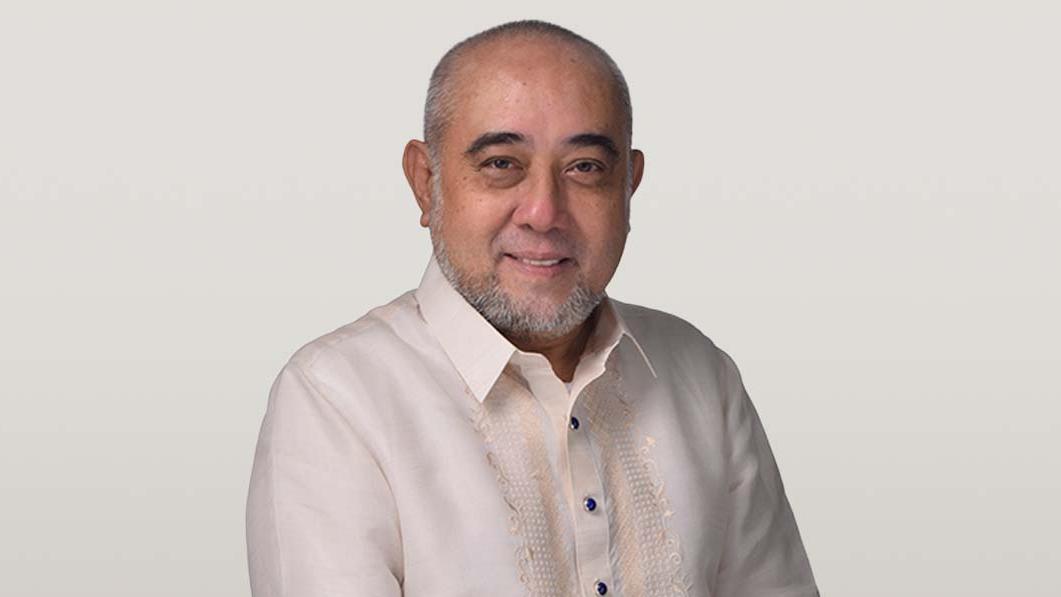 Source: DOST-PNRI.
Source: DOST-PNRI.
Philippines considers nuclear as a solution to potential baseload power crisis
But amendments to energy laws are needed, DOST-PNRI Director Carlo Arcilla said.
The Philippines is facing a significant challenge as around 80% of its baseload power is under threat. To address the issue, the country must transition away from its heavy reliance on coal, and the adoption of nuclear power is the fastest option and would make electricity costs more affordable, the Department of Science and Technology–Philippine Nuclear Research Institute (DOST-PNRI) said. However, current laws in the Philippines prohibit the sale of electricity generated by a nuclear plant under Republic Act No. 9136 or the Electric Power Industry Reform Act of 2001.
According to the DOST-PNRI Director Carlo Arcilla, including nuclear power in the country’s energy mix would be beneficial to consumers as it would bring down the “expensive” electricity rates and provide a stable electricity source of power.
“We badly need nuclear as a baseload source of power, but it can only come maybe in the next four or five years, the shortest time the 620-megawatt 1984 Bataan Nuclear Plant gets started,” Arcilla told Asian Power.
Is it crucial for the Philippines to adopt nuclear in its energy mix, considering that there are also other alternatives present?
The current electricity mix of the Philippines is about 50% coal—90% of which is imported mainly from Indonesia. Around 20% comes from the Malampaya Gasfield in the West Philippine Sea, but it's running out.
The main problem is that 80% of our baseload is under threat. Last year, Indonesia said they will stop exporting coal because they need to use it and it has become very expensive. As a result, we have to send diplomats to Indonesia to plead with them to continue supplying coal to us because we will have serious issues in energy.
We also have renewables contributing about 20% of the country’s energy mix. About 15% from geothermal. We have hydropower. Our solar and wind are indeed very few, and there's a lot of room for them to improve.
We can also import liquid natural gas. But after Russia invaded Ukraine, the price of natural gas skyrocketed, which means that Philippine electricity, which is already one of the most expensive in the world, will even become more expensive.
South Korea, for example, started the nuclear program same time as the Philippines. They now have 24 nuclear power plants and the electricity rate is about half that of ours. In the Philippines, the median Filipino family which uses maybe one refrigerator and no air conditioning pays about US$28 (P1,500) to US$37 (P2,000) a month for electricity. If they take home US$37 (P2,000) a day, that means that they're spending fully 10% to 15% of the take-home pay on electricity. If we use that metric, it's very expensive. Other countries have that 1% or less-than-a-half percent. That is why the 2019 Department of Energy survey showed 79% of Filipinos said they are open to nuclear because electricity is very expensive. With the energy prices now, the country will have a serious energy crisis this month maybe or this year. It's incumbent that we find cheap and safe energy sources and nuclear should not be overlooked.
The secret here is a mix. We need the mix of the coal that is being phased out and renewables, but we need a stable source and nuclear has to be considered. Nuclear is very clear, there are no emissions. Its waste disposal can be done safely. The biggest problem with nuclear is misconceptions and bad rap. But 10% of the world's energy is coming from nuclear power and in America, it is 20%, they have nearly 100 nuclear power plants operating for 60 years. We badly need nuclear as a baseload source of power, but it can only come maybe in the next four or five years, the shortest time the 620-megawatt 1984 Bataan Nuclear Plant gets started.
Let's look at the pros and cons of using nuclear energy. How would electricity consumers in the Philippines benefit from the inclusion of nuclear power in the energy mix?
The cost of electricity from nuclear is one of the cheapest. If you increase the share of nuclear in the energy mix, that will bring the average down. We don't want to replace everything with nuclear, only in the baseload. If we don't include nuclear power and rely only on imported liquid natural gas, electricity, which is now expensive, will even go higher. This is one of the only ways we can bring it down.
What are the challenges or maybe even dangers in pushing for developments in the nuclear sector?
The main problem with nuclear is bad perceptions. If you look at the record as it is, nuclear is the safest energy source. It has operated for more than 60 years. There are over 400 nuclear power plants globally. If you thought about all the nuclear plant operating hours, and the number of accidents and casualties over those total operating hours, the deaths coming from nuclear are smaller than from coal, natural gas, and hydro. The problem is that many Hollywood movies send a bad rap on nuclear. For example, in Three Mile Island, they never considered the fact that in America, almost 100 nuclear power plants are operating safely for 60 years and are being given another 20-year license. You've never heard of the electricity resource that's being given 80 years license. Coal plants only last over 20 years. Solar and wind are only available 30% of the time as the sun doesn't shine at night and the wind doesn’t blow all the time. It means 70% of the time, you have to have a backup and that backup now is coal. Why can't we use nuclear to back up renewables? They're not incompatible. They help each other as a mix.
Is the government supportive when it comes to the generation of nuclear power in the country?
Yes. Former President Rodrigo Duterte signed an executive order, which created what we call the National Position for Nuclear Energy Programme. It's telling the world that the Philippines is considering nuclear as part of the energy mix. Incumbent President Ferdinand Marcos, Jr. in his first State of the Nation Address mentioned the mix. He said we must not neglect nuclear, because it is low-cost and because it's the largest source of clean energy. The cons are overridden by the good things, the only problem and the big challenge is changing the mindset of people.
What more should the government do to accelerate the adoption of nuclear power in the Philippines?
The executive order from President Duterte created the Nuclear Energy Program Inter-agency Committee (NEP-IAC). It is a whole government approach. We're following the best practices that have been compiled by the United Nations International Atomic Energy Agency (IAEA). The IAEA has listed 19 infrastructure issues that a country going nuclear should address, including national position, safety, financing, waste disposal, and stakeholder involvement. The NEP-IAC is studying all of those issues to see how the Philippines is ready to tackle them. Nuclear is the only energy source that has an international governing safeguard body. There are some issues present in the Philippines now such as should the government-owned Bataan Nuclear Power Plant be rehabilitated, it's prevented by the current law, EPIRA, to sell electricity on the grid. So amendments to current laws might be needed. The regulator also needs to be fully independent. I'm the director now of the PNRI. We’re the regulator, but we're not fully independent. The idea is to make regulators independent so that they can fully implement without obstruction the safety aspects of nuclear power.
Now going to the Bataan Nuclear Power Plant. When do you think is it going to be operational?
The Bataan Nuclear Power Plant cannot be operated this year. But if the Philippines decides to go nuclear, this is the fastest way. The disadvantage of nuclear power plants is that there’s a long lead time for construction because of safety issues. The shortest construction time from nothing to an operating plant is five years, which has been done by only South Korea and China. Our Batan Nuclear Power Plant is already fully finished, but never used. South Korea said they have an exact model like the Bataan, and they can rehabilitate it within four to five years. But it will have to be a government-to-government agreement.
We can also have small modular reactors which have a capacity of are from 300 megawatts or less. These are ideal for islands that are not connected to the grid, where electricity is the most expensive. The beauty of the small modular reactors is that they're all completed in the factory. They can fit in a truck, and they are plugged and played into the area. It's buried underground for safety reasons. However, it cannot be available for another eight years, which is after the term of the current president. But can we build nuclear plants? It depends. It will if we're able to overcome the challenges.
Are there also other areas in the Philippines that are ideal for the development of nuclear facilities?
The Bataan can accommodate three or four more nuclear power plants. The foundation for the second one is already there. We have 300 hectares. Nuclear power is a very dense form of energy. It has 4 million times the energy contained in oil, wind and gas. Energy concentration has to be managed very well as in doing so, you will get a much cheaper source. That's a big advantage of nuclear power.
What other places can host it? A good place to host is Palawan. The province of Palawan has no earthquakes, and they have an energy shortage. There is also a town in the province of Pangasinan that has volunteered to set up a nuclear plant in their vicinity, the town of Labrador because it will bring a lot of jobs. Typically, they can give a discount to the townspeople around the plan to have lower electricity and I think that's how they will also do it for the Bataan Nuclear Power Plant. There are still some objections to it. For example, the congressman from Bataan is against it but the people of Bataan, if they did a survey, I'm sure that they will favour nuclear power plants. The main opposition is from maybe politics and maybe from some church leaders and the root cause of that is a lack of understanding of nuclear. There have been some horrible accidents like Fukushima and Chernobyl. But if you analyse the root causes of these accidents, they can be avoided. That's why I'm fairly confident that if the stakeholder issues are overcome, you could have nuclear here.
What should the government do to address and prepare for these concerns regarding possible earthquakes and the location of the nuclear facility?
Japan and the Philippines have very similar geologic characteristics. We both have earthquakes, volcanoes and many disasters. But when you build a nuclear plant, you look at exclusionary factors. You cannot build close to a volcano or fault, etc. We can do the studies to make it safe and that's where the regulations come in. Right now, we will be the ones that are licensing it. The reason why South Korea can rehabilitate our plan is that they have an exact model running for almost 40 years, so they know what they're talking about. We're hearing that we will have another severe shortage in the next year or so. In the 1980s, we suffered a lot of brownouts because we didn't operate the plant. We cannot afford another energy crisis like that again, and nuclear will help alleviate that energy crisis.
US$1 = P54.44





















 Advertise
Advertise







